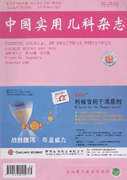Objective To investigate the correlations between T cell subsets and HBV replication levels, liver function and liver pathology in children with hepatitis B virus. Methods Outpatient and inpatient treatment according to A total of 124 cases of HBV-DNA positive hepatitis B were included in the study. The Department of Pediatrics in The People’s Hospital of Gansu Province and Institute of Infectiou Diseases the First Hospital of Lanzhou University from April 2008 to April 2010 outpatient and hospitalized children with chronic hepatitis B, Among the 124 patients, 84 were male, 40 female;65 were HBV carriers, 59 chronic hepatitis(31 mild,18 moderate and 10 severe);peripheral blood T cell subsets, cccDNA, DNA, hepatitis B virus markers and liver function were detected; histopathological examinations were performed in 46 cases. Mean while 60 cases of HBsAg (-) were included as the normal control group. Results In each group of children with hepatitis B,peripheral blood CD3+, CD4+and CD4+/CD8+ were significantly lower than the control group( F = 13.26、12.34、14.73,P< 0.01), CD8+ higher than the control group(F = -11.87,P<0.01); in carriers group and mild group CD3+, CD4+and CD4+/CD8+ were significantly lower than the moderate group and severe group, differences being statistically significant. In the moderate and severe groups, HBV cccDNA positive rate was higher than that in the HBV carriers or the mild group(F = 25.429,P<0.01). HBVcccDNA positive group and HBeAg positive group were compared with HBVcccDNA negative group and HBeAg negative group, and CD3+, CD4+and CD4+/CD8+ were reduced,while CD8+ cells were increased, while was statistically significant . CD8+ cells increased with increasing viral load(F =-11.43 P<0.01),while CD3+, CD4+and CD4+/CD8+ decreased with the increase(F=12.42,13.87,12.75,P <0.01). Abnormal transaminases group was compared with normal group, and CD3+, CD4+and CD4+/CD8+ were reduced (t=15.28,14.63,27.74,P <0.01),while CD8+ cells were increased(t =-16.39,P <0.01), which was statistically significant. CD3+, CD4+and CD4+/CD8+ increased with the degree of inflammation,and fibrosis tended to increase(t=9.25,11.85,26.34,P<0.01),and CD8+ increased with the degree of inflammation,and fibrosis showed a downward trend(t =-10.18,P <0.01). Conclusion T-cell immune dysfunction and the level of viral replication and liver function and liver pathology have a certain relationship. HBV active replication increases immune disorders and immune function recovery,which remoues virus and at the same time leads to pathological changes in liver tissue.

